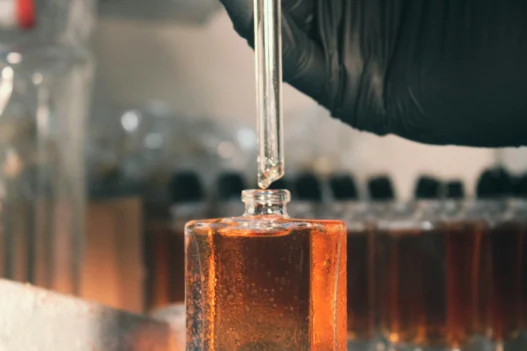5-(Trifluoromethyl)uracil, a chemical compound commonly found in pharmaceuticals, holds significant relevance to everyday life due to its pivotal role in the development of antiviral and anticancer medications. Its unique properties make it a crucial component in certain drug formulations that help combat various diseases and improve health outcomes for individuals. Through ongoing research and advancements in pharmaceutical science, the impact of 5-(Trifluoromethyl)uracil continues to be felt in the medical field, benefiting individuals worldwide.
Table of Contents:
- 💡 Commercial Applications
- ⚗️ Chemical & Physical Properties
- 🏭 Production & Procurement
- ⚠️ Safety Considerations
- 🔬 Potential Research Directions
- 🧪 Related Compounds
💡 Commercial Applications
5-(Trifluoromethyl)uracil, also known as CF3U, has various commercial and industrial applications. It is commonly used as a building block in the synthesis of pharmaceuticals, agrochemicals, and dyes. CF3U is also utilized in the production of specialty chemicals and as a reagent in organic chemistry reactions.
In terms of drug and medication applications, 5-(Trifluoromethyl)uracil has shown potential as an antiviral agent. Research has demonstrated its effectiveness in inhibiting the replication of certain viruses. Additionally, CF3U has been investigated for its potential use in cancer therapy due to its ability to target specific pathways involved in tumor growth. Further studies are ongoing to explore its pharmacological properties and potential as a therapeutic agent.
⚗️ Chemical & Physical Properties
5-(Trifluoromethyl)uracil is a white, crystalline solid with no distinct odor. It is typically odorless in its pure form.
With a molar mass of 158.06 g/mol and a density of 1.599 g/cm³, 5-(Trifluoromethyl)uracil is heavier and denser than common food items such as sugar and salt.
The melting point of 5-(Trifluoromethyl)uracil is approximately 190°C, while its boiling point is around 308°C. These values are much higher compared to common food items like butter and chocolate.
5-(Trifluoromethyl)uracil is slightly soluble in water and has a low viscosity. This is in contrast to many common food items, which are much more soluble and have higher viscosities in water.
🏭 Production & Procurement
5-(Trifluoromethyl)uracil is typically produced through a multi-step synthesis process involving the reaction of uracil with trifluoroacetic anhydride. This reaction leads to the formation of the desired product, 5-(Trifluoromethyl)uracil, which can then be isolated and purified using standard chemical techniques.
Once produced, 5-(Trifluoromethyl)uracil can be procured from chemical suppliers specializing in fine chemicals and specialty compounds. The compound is commonly available in both bulk quantities and smaller research-grade quantities for use in various applications. It can be transported in sealed containers to prevent contamination and degradation during transit.
For transportation, 5-(Trifluoromethyl)uracil is typically packaged and labeled according to regulatory requirements for the shipment of hazardous chemicals. It is important to adhere to proper handling procedures and storage conditions to ensure the integrity and safety of the compound during transport. Additionally, appropriate documentation and certifications may be required for the legal and safe transportation of 5-(Trifluoromethyl)uracil.
⚠️ Safety Considerations
Safety considerations for 5-(Trifluoromethyl)uracil include its potential for eye and skin irritation upon contact. It is important to handle this compound with care to avoid any adverse effects. When working with 5-(Trifluoromethyl)uracil, it is recommended to use appropriate protective equipment such as gloves, goggles, and a lab coat to minimize the risk of exposure.
In addition, 5-(Trifluoromethyl)uracil should be stored in a cool, dry, well-ventilated area away from incompatible substances. It is crucial to follow proper storage guidelines to prevent any potential hazards. Proper disposal methods should also be followed to ensure the safety of individuals and the environment.
Hazard statements for 5-(Trifluoromethyl)uracil include its potential for causing skin and eye irritation. It is also classified as harmful if swallowed or inhaled. Therefore, it is important to handle this compound with caution and follow all safety protocols to avoid any adverse effects on health.
Precautionary statements for 5-(Trifluoromethyl)uracil include wearing protective gloves, clothing, eye protection, and face protection when handling this compound. Avoid breathing in any dust, fumes, gas, mist, vapors, or spray when working with 5-(Trifluoromethyl)uracil. Store this compound in a well-ventilated place and keep container tightly closed to prevent any potential hazards.
🔬 Potential Research Directions
One potential research direction for 5-(Trifluoromethyl)uracil involves examining its potential as a building block for the synthesis of nucleoside analogues with improved antiviral activity.
Another avenue of research could focus on investigating the biological activity of 5-(Trifluoromethyl)uracil and its derivatives as potential anticancer agents, due to their ability to inhibit DNA synthesis and cell proliferation.
Furthermore, studies could explore the structural modifications of 5-(Trifluoromethyl)uracil to enhance its pharmacokinetic properties, such as solubility and bioavailability, to improve its therapeutic potential.
Additionally, research efforts could be directed towards elucidating the mechanism of action of 5-(Trifluoromethyl)uracil in inhibiting key enzymes involved in nucleic acid biosynthesis, which could provide insights for drug development.
Moreover, there is a potential for investigating the interaction of 5-(Trifluoromethyl)uracil with various nucleic acid structures, such as RNA and DNA, to better understand its molecular mechanisms and potential applications in nucleic acid-based technologies.
🧪 Related Compounds
One similar compound to 5-(Trifluoromethyl)uracil is 5-(Chloromethyl)uracil. In this compound, a chlorine atom replaces the trifluoromethyl group, leading to a slightly different molecular structure and potentially different chemical properties. This substitution may impact the compound’s reactivity and biological activity compared to 5-(Trifluoromethyl)uracil.
Another similar compound to 5-(Trifluoromethyl)uracil is 5-(Bromomethyl)uracil. Here, a bromine atom takes the place of the trifluoromethyl group, resulting in a distinct chemical structure. This modification could alter the compound’s solubility, stability, and interactions with other molecules. Further study is warranted to understand how this change affects the compound’s behavior in biological systems.
Additionally, 5-(Iodomethyl)uracil is another compound similar to 5-(Trifluoromethyl)uracil. In this case, an iodine atom replaces the trifluoromethyl group, introducing new chemical characteristics. The presence of iodine may influence the compound’s physical and chemical properties, potentially impacting its use in various applications. Further research is needed to explore the potential differences between 5-(Trifluoromethyl)uracil and 5-(Iodomethyl)uracil.









